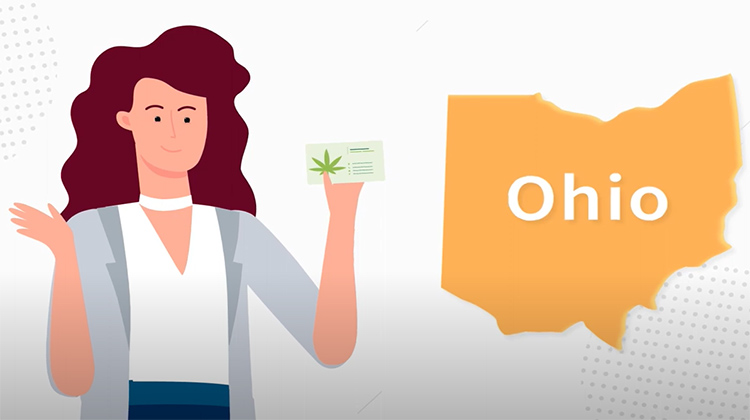Introduction to Ohio Medical Marijuana Program
The Ohio Medical Marijuana Control Program (OMMCP) was established in 2016, providing legal access to medical marijuana for Ohio residents with qualifying medical conditions. The program is regulated by the Ohio Board of Pharmacy and the Ohio Medical Board, ensuring that patients receive safe, high-quality cannabis products. Since its inception, the program has grown, offering patients a variety of products and a streamlined process for obtaining an Ohio medical marijuana card.
Who Qualifies for an Ohio Medical Marijuana Card?
In Ohio, not everyone is eligible to obtain a medical marijuana card. The state has a list of qualifying medical conditions that allow patients to access medical cannabis legally. Some of the most common qualifying conditions include:
Chronic Pain: Often considered the leading reason patients seek a medical marijuana card, chronic pain is a debilitating condition that affects millions of Americans.
Cancer: Medical marijuana can help alleviate the side effects of cancer treatments such as chemotherapy-induced nausea and loss of appetite.
Epilepsy and Seizures: Cannabis, particularly CBD-rich strains, has shown promise in reducing the frequency and severity of seizures.
Multiple Sclerosis (MS): Medical marijuana can help manage spasticity and pain associated with MS.
Post-Traumatic Stress Disorder (PTSD): Veterans and others suffering from PTSD can benefit from the anxiety-reducing properties of cannabis.
Glaucoma: Marijuana has been known to reduce intraocular pressure, making it a treatment option for glaucoma patients.
Inflammatory Bowel Disease (IBD), including Crohn’s Disease: Cannabis can help reduce inflammation and pain associated with IBD.
To apply for a card, patients must first be diagnosed with one of these qualifying conditions by a certified Ohio physician.
How to Obtain an Ohio Medical Marijuana Card
Getting an Ohio medical marijuana card involves several steps. Here’s a comprehensive guide to help you through the process:
Step 1: Consultation with a Certified Physician
The first step in obtaining an Ohio medical marijuana card is to consult with a physician who is certified by the state to recommend medical marijuana. During the consultation, the physician will review your medical history and confirm whether you have a qualifying condition. If you qualify, the physician will enter your information into the Ohio Medical Marijuana Registry.
Step 2: Registration in the Patient & Caregiver Registry
After the physician has entered your information, you will receive an email from the Ohio Medical Marijuana Registry with instructions on how to complete your registration. This includes verifying your information and paying the registration fee, which is typically $50 for patients and $25 for caregivers. Reduced fees are available for veterans and those on Social Security Disability Insurance (SSDI).
Step 3: Receiving Your Medical Marijuana Card
Once registered, you will receive your medical marijuana card via email, which you can print out. This card allows you to purchase medical cannabis products from any licensed dispensary in Ohio. It’s important to note that the card is valid for one year, after which you’ll need to renew it by having another consultation with a certified physician.
What Can You Purchase with an Ohio Medical Marijuana Card?
With an Ohio medical marijuana card, patients have access to a variety of cannabis products designed to treat different symptoms and conditions. These products include:
Flower: The traditional form of cannabis, flower can be vaporized or smoked.
Edibles: Cannabis-infused foods such as gummies and chocolates are popular for their ease of use and discretion.
Tinctures: Liquid cannabis extracts that can be taken sublingually (under the tongue) or added to food and beverages.
Topicals: Creams, lotions, and balms infused with cannabis are used for localized pain relief.
Concentrates: Highly potent cannabis extracts like wax, shatter, and oil are used for vaping or dabbing.
Transdermal Patches: These patches deliver a steady dose of cannabinoids through the skin over an extended period.

Legal Considerations and Restrictions
While having an Ohio medical marijuana card provides legal protection within the state, it’s important to understand the limitations and restrictions:
No Reciprocity: Ohio does not currently recognize medical marijuana cards from other states. Likewise, your Ohio card is not valid outside of Ohio.
No Public Use: It is illegal to use medical marijuana in public places. Consumption is restricted to private residences.
Employment: Employers in Ohio are not required to accommodate medical marijuana use, and you can still be terminated for a positive drug test.
Firearms: Federal law prohibits individuals who use marijuana from purchasing or owning firearms, even with a state-issued medical marijuana card.
Renewing Your Ohio Medical Marijuana Card
As mentioned earlier, your Ohio medical marijuana card is valid for one year. The renewal process is similar to the initial application:
Schedule a Renewal Appointment: As your expiration date approaches, book an appointment with a certified physician.
Re-Evaluation: The physician will reassess your condition to confirm that you still qualify for medical marijuana.
Update Your Registration: After your physician submits the renewal recommendation, you’ll need to log in to the Ohio Medical Marijuana Registry to pay the renewal fee.
Receive Your New Card: Once the renewal is processed, you’ll receive your updated card via email.
Benefits of Having an Ohio Medical Marijuana Card
Obtaining an Ohio medical marijuana card offers numerous benefits, particularly for those struggling with chronic and debilitating conditions. Some of these benefits include:
Legal Protection: Cardholders are protected from state-level criminal prosecution for possession and use of medical marijuana.
Access to Licensed Dispensaries: Patients can purchase medical-grade cannabis from state-regulated dispensaries, ensuring the quality and safety of the products.
Variety of Treatment Options: With access to different forms of cannabis, patients can choose the method that best suits their needs.
Tailored Dosages: Unlike recreational users, medical marijuana patients can work with their physicians to determine the most effective dosage and strain for their specific condition.
Cost Savings: Medical marijuana patients often have access to lower prices and discounts not available to recreational users.
Conclusion
The Ohio Medical Marijuana Program has made significant strides in providing patients with safe and legal access to cannabis for medicinal purposes. By obtaining an Ohio medical marijuana card, patients can take control of their treatment options and improve their quality of life. Whether you’re dealing with chronic pain, PTSD, or another qualifying condition, medical marijuana offers a promising alternative to traditional treatments.




